To kick off our new space [UNDEFINED] where we explore ideas and issues that are important to us, we caught up with Cathryn Wills, founder of Sans Beast, one of Australia’s most ethical fashion brands to discuss what it takes to build an ethical brand in 2023.
Thanks for joining us, first up, what inspired you to start Sans Beast?
It was a slow burn – but essentially it came to me after leaving a big job that I’d had for many years in the fashion accessory space, with Australian brand, MIMCO. After more than a decade, I lost my inspiration for the role + the job I was doing, and despite remaining committed to the end – I knew a change was required. I’d moved to a vegetarian diet in my personal life and was on the road to becoming vegan, so this was integral to my move – not wanting to work with animal derived leather anymore. It also felt like the end of a chapter for me; it was time for a new dawn – and I also believed the brand deserved fresh eyes. After I left Mimco + began to think about ‘what’s next’ – I initially dismissed the idea of doing anything in the handbags space, having worked in the field for so long, yet, when I researched the vegan space, I recognised that there was a gap in the market + decided to stick to the category I had professional credibility + experience in.
I started Sans Beast with the view of creating a design-led, ethically made, non-animal derived brand, that was surrounded by inspiring storytelling and creativity. All the facets that exist in many premium brands that do use animal hides, but to bring that into the vegan space, which I believed had been lacking disciplined + experienced creative depth.
I think having spent so many years at Mimco and recognising that commercially there can be great success in the premium space, versus luxury. It doesn’t break the bank, it’s a considered purchase. If you’re spending $400 on a handbag, you’ve still got to consider it, but it’s not a mortgage repayment. Versus a $29 handbag – there’s no thought that goes into that. One can throw it away if they don’t like it.
The other thing that I noticed when I was researching bags that didn’t use animal products, around six years ago, was that there was a lot of PVC around, and there was little care as to provenance, technical efficacy or where the bag was made. A lot of the vegan space was dominated not by an ethical approach to design, but a price approach. It was about ‘how do we rip off a designer bag, but do it for less than a hundred dollars’. I felt that there was opportunity in responsibly sourced, considered design that wasn’t just doing it for a cheap, achievable price point, but one that was doing it in an ethical manner. As well as the collectability and the emotional attachment to the aesthetics of a quality brand, there is also the connection we have to brands where we identify with their ethos. This is the place I have strived to be for Sans Beast.
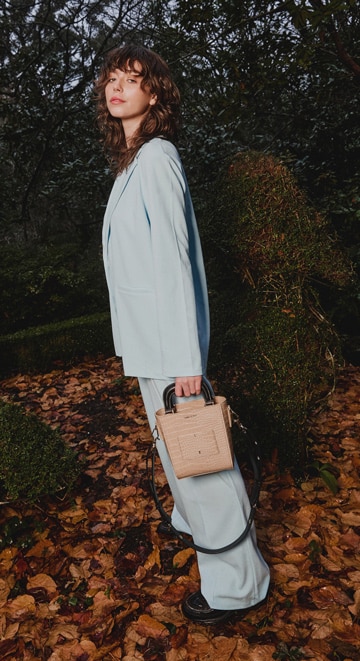
What are some of the highlights on your journey so far?
I don’t think I recognise highlights when they’re happening, it’s not until I’ve reflected. The learnings as well, you don’t realise that you’ve actually evolved as a business leader or owner, designer, entrepreneur etc, until you’ve actually gone through the challenges.
I think building a team has been one of the biggest, most rewarding aspects of this. I don’t have an expectation that people nowadays are going to be with us for the 5-10 year sort of chapter; it’s not like that anymore. I’ve learned to appreciate whether it’s a short chapter or a longer one within the business, there’s always a contribution. Each person who has joined us has contributed something to where Sans Beast is at today.
Building our HQ in Brunswick is definitely a highlight. Getting a building that’s ours; painting it, wallpapering it, decorating it, getting the store set up. And for me, from a design perspective, I’ve realised as time has gone by that whilst I love product, and I love working with Valeria on our collections – creatively designing spaces is equally rewarding. I think that will be where the business will go in the future. Product is going to be central of course, but I think about what I love about coming into beautiful + interesting spaces, or why I’m excited about traveling next week is to go into retail or hospitality spaces and get excited by the feeling + spirit these spaces evoke.
The music, the smell, the set up. Is there a cafe in the store? Can I eat, drink, get a manicure? That quest of ‘what’s on offer here?’. And of course, that inspires you generally to buy something as well. We all know that the environment impacts our purchasing habits.
The community growth is another highlight as well. Seeing the growth on our Instagram + our community is rewarding. I wouldn’t say it’s like a rocket ship at all, but I know that it’s organic and I feel like I’ve stayed true to my aesthetic principles. Thirst traps that are always going to get businesses to a hundred thousand followers. I think that’s an easy thing to fall into, but I feel like we’ve stayed true the core ethos of cruelty-free and not utilising or exploiting animals. That can polarise opinions and get people thinking, ‘don’t tell me what to do’, ‘I won’t have vegans lecturing me’. But it means that those that are on our bus really want to be on our bus, which I’m proud of.
Diving straight in, how do you define ethical design?
I think ethics are often seen as personal views, but the definition of ethics is moral principles that govern a person’s behaviour. For me, industrial farming has too many dark areas to be considered ethical. Also, plagiarism without crediting provenance of work + putting profit over care for humans + animals is unethical.
I don’t believe exploiting animals for their skin is the right thing to do from an ethical approach, and there’s so much evidence that shows that there’s cruelty that goes on within industrial farming. It’s not just an opinion of a vegan, it’s factual given the overwhelming evidence. Of course, cruelty is not occuring on every farm, but the system is not set up for protection of animals, it’s there to drive profit, and that is where darkness of action can exist. So, for me, it very much starts with the raw material and then it goes into the design process.
The ethics of design mean that I think you need to celebrate ideas and you don’t steal ideas from other people. I’m not idealistic to believe that we’re reinventing a handbag. There’s lots of things that have been done before, we know that, but I think it’s about making sure that you are bringing your viewpoint to it versus shopping, buying, copying. I don’t think that’s ethical.
And I guess the other thing is the ethics of how you design that product to go the distance for people. How you price it. I think there’s ethics surrounding that, that you are looking after your business from a profit point of view, that you can continue to employ people, but that you are not taking advantage when it comes to what you’re charging. It has to be a valid value equation. I think ethics are around the value equation that you have with your community. You’re never going to alleviate people saying ‘well, that’s too expensive for me’, yet just because it’s too expensive for someone, doesn’t mean that the factory shouldn’t be paid appropriately and that our business shouldn’t be paid appropriately for our efforts.
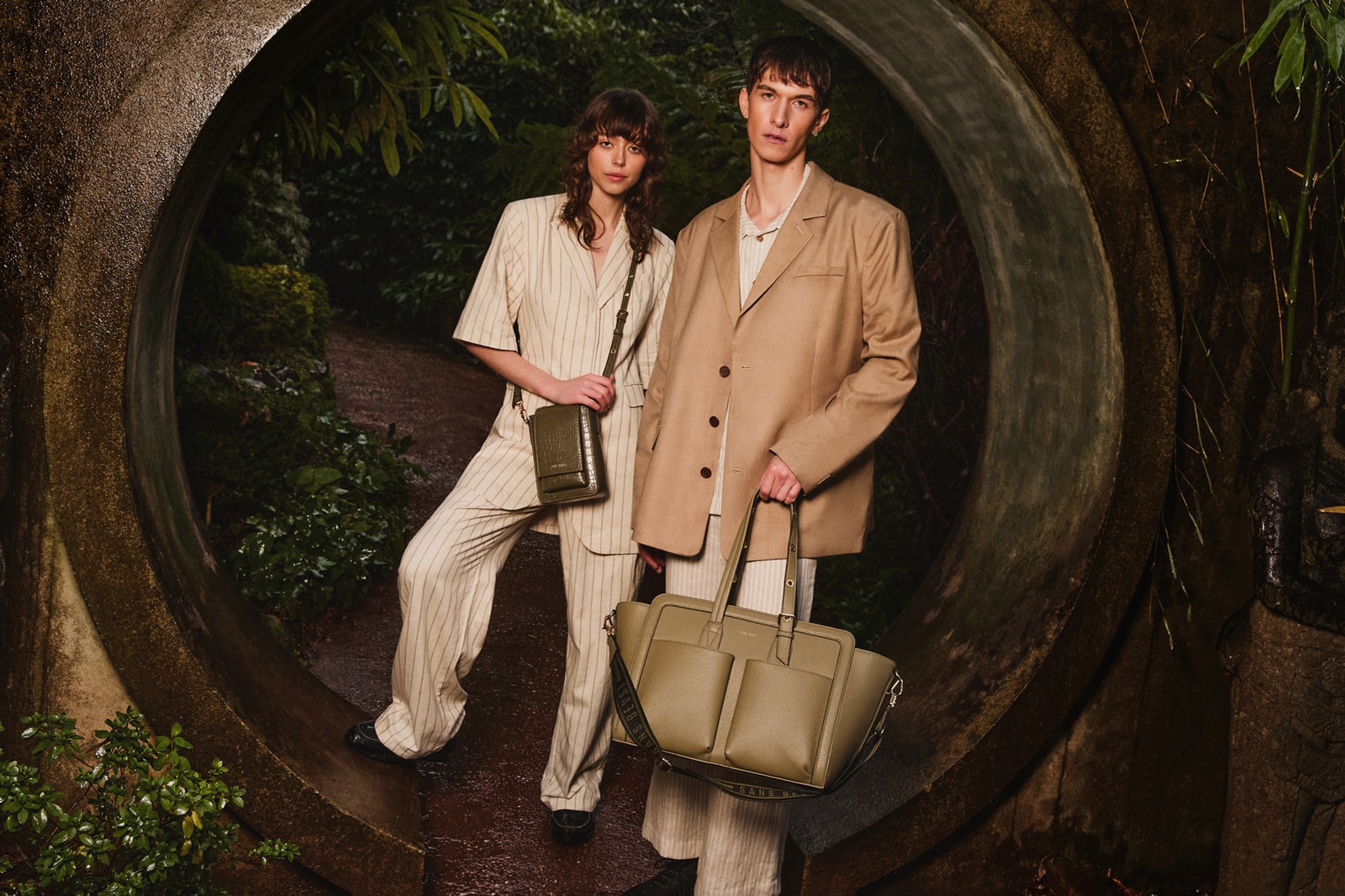
How do you approach ethical design within Sans Beast?
I think it’s about people, its materials, it’s manufacturing and it’s about our team. I want to keep employing people which means we do need to make a profit, yet it’s got to be fair. I think that all of this is contributing to being an ethical business.
We donate between $1.8-2.5K per month, depending on the month, to charitable causes, and sometimes that hurts. But then I look around and I think I’m living in a developed country, I’ve got a roof above my head, I work in a lovely office where we have the joy of designing, telling stories + selling handbags. Some months are slower than others, but we are in a position of privilege compared to many, and I believe we should always give some of our income away.
Do you use any filters or frameworks when faced with ethical decisions?
The primary filter is, ‘were animals part of the raw material process?’. The other filter that’s applied is, ‘this might be good enough for today, but are we making sure that we are pushing this for the future?’.
Obviously synthetics aren’t the ideal as time goes on for the planet. I’m probably not as anti-synthetics as some people are though, there’s a reason why they were implemented and they do last. The problem is for how long. And can they go on to be other things? If they’re not going to go into the dirt or soil, can they be repurposed? And can we use materials that have been repurposed? We think about this constantly + we are working to implement more biobased materials as R+D improves in this space.
Being a vegan brand, how do you balance ethical materials with aesthetic design?
We’re at about 80% of our faux leathers being made with 58% recycled content. All of our jacquard webbing for our straps are all recycled yarns from plastic bottles. And then we’ve got 4-5% that’s biobased cactus. Next season we’ll be introducing AppleSkin.
We’re also sampling MIRUM as well, which is biobased, there’s no plastic at all in it. No polymer is binding it. It’s by a business called Natural Fiber Welding. They use cork, mycelium and any sort of biobased mass or plant matter + form it into sheets in a press + their own patented technology. So, the value of our product is there in these materials, and it’s in the design approach as well. There is an aesthetic opinion in our pieces, despite them being relatively classic. People know the brand when they look at it and they recognize that little vintage handle or the strap, or that it’s an interesting shape. I think people recognize that. So, I think the impact is in the materials and it’s in the messaging that we put out there.
And I think value is another filter that I apply to it as well, because when you’re spending $200 to $400 on something, part of that value equation is the experience you’ve had with that brand. In terms of retail, we (currently) have just a showroom as part of our HQ, but it’s a beautiful petite space + we offer a personal service. If it’s online where you experience the brand, it’s the interaction that you receive through the email conversation or DMs. It’s the unwrapping, it’s the tissue paper. That’s also what you are buying from this independent, creative brand. The whole experience is immersive.
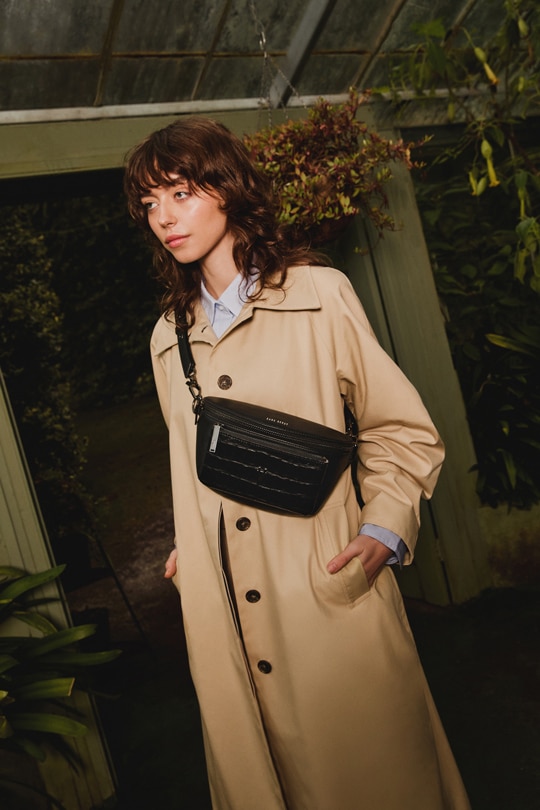
You've been in fashion retail for an incredible 30+ years now, can you share any tales of ethical challenges that you've faced and how you've dealt with them?
I was with Mimco for a good 12 years, and before that I was working in knitwear at CR (Country Road) + before that, most of my experience was in retail or raw materials. I didn’t really think about the ethics of animal raising when I was working in knitwear, with Merino sheep, for example. But certainly, in the latter years of Mimco, I was watching documentaries and educating myself more and more. Provenance was something I recognised was needed, and I found it very tough to get clarity on the full provenance of a hide. Delusion on my part was real, I had cognitive dissonance. I learnt that hides are traded on the open market. Traceability is close to impossible when you’re buying a leather bag – and I am referring not just to traceability of the tannery, that’s easy – I’m referencing full traceability of the animal to handbag journey.
I was once talking to the owner of an Indian factory about their buffalo hides + he conveyed that the baby buffalo died of natural causes, they weren’t slaughtered. As it turns out, they died because they were purposely left out in the cold in winter. I found this distressing, yet it illustrated how we can all justify abhorrent behaviour, for the benefit of profit.
You see on socials; people are posting images of little lambs in springtime. It’s the first day of spring, and we all like the notion of jumping lambs. But, in Australia, lamb chops are a popular meat. There’s a real disconnect between cute animals on the ‘gram and what people put on their plate.
We are a disconnected species and we have forgotten that we are connected to the animals, and the plants and the earth. I look at leather bags + shoes, and I remember how much I used to be attracted to them – just as I enjoyed eating animal flesh. I believe in order to fully wake up though, some level of sacrifice is necessary, and I’m not convinced this is a comfortable position for many. It certainly took me many years to get to this place, and now I can’t imagine eating an animal or buying a leather pair of shoes. I have such admiration for younger people who get on this path early.
When it comes to the fashion and accessories industry, how important is transparency to consumers?
The key is sharing as much as you possibly can, without bamboozling people with things that they don’t understand, I suppose. I mean, we put our factory name on there, and we show photos of the factory. We talk about where the materials come from. I guess it just depends on what benefit there is for the customer and what benefit there is for the business to be transparent – what defines transparency. There has to be trust + transparency supports this trust.
I think transparency also applies to sharing challenges and sharing your roadmap with them and saying, listen, it’s not perfect. And even though I’ve done this for a while, I definitely don’t know everything, not at all. But I guess my view of transparency is also to say, we’re never going to be perfect. We’re in the fashion industry and we’re making new things. So, if you want that feeling of coziness, that your purchase has done nothing to damage the earth, it’s not realistic to my mind. Everything does some damage, the aim for us is to minimise that damage.
Our number one aim is to not exploit animals and to offer you something stylish in the place of something that has historically been made from animals. If you love stylish handbags and you appreciate quality, and you want to look great, but you don’t want to hurt an animal then there are options.
You have to define what ethics means to you. That’s the first thing. For me, it was non-negotiable working with animal products. So that was my north star or my guiding principle, and then everything flowed from there.
As an accessories brand operating predominantly in online retail, what responsibilities do you think brands need to consider as they shape and operate in the digital space?
I guess the first thing with online is packaging and how we’re packaging things. We don’t offer free returns. I know free returns are things that customers love, but unfortunately free returns also promote and inspire impulse buying. I think purchasing should be a serious consideration.
Obviously, it’s hard to buy online. We do everything we can to give as much information for the online purchase as possible, so people can feel the trust when they’re making that purchase. High quality imagery + videos and we’re constantly inviting our community to DM us if they want to see anything on the body. We’re doing mirror selfies to show how things look on a daily basis + doing all in our power to offer a personal shopping service, because we know it’s hard to buy online.
And then obviously with the packaging, we do recycled boxes, recycled and recyclable. We use noissue tissue, eco-friendly soy-based ink, which is FSC certified acid-free pulp, and the postcards, same deal.
We use water activated tape to seal everything. It’s very low-fi. Like we’ve literally got this little roller that you put the tape in, and then there’s a little bit of water at the front. The tape goes through the water, you rip it off and then you put it on the box. It’s small but it’s great, and it seals beautifully. Better than the plastic tape that we used three years ago.
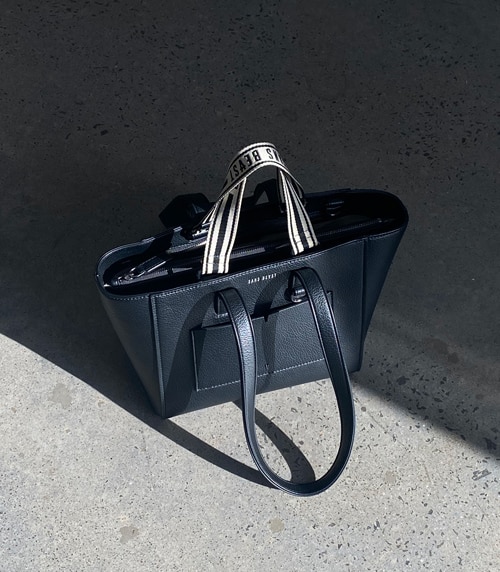
Products are often designed with the target customer in mind, leaving a portion of customers (un)intentionally left out. Do you think it's possible to be commercially viable and inclusive at the same time?
I feel that because we’re accessories and not apparel that’s one step towards greater inclusivity. No one can ever feel like the bag doesn’t fit them. Having said that, strap length is definitely a consideration. And certainly, for our first couple of seasons we weren’t trying the bags on enough different body shapes and we had some size 18, 20, 22 customers that thought the strap lengths were too short for them. We can’t act on things super quickly given lead times on production, but for our next production, we made them longer and we’ve made them longer again since then. So, we do our best, within the framework of not being able to have multiple SKU’s and different length straps available, to be more mindful of the different body sizes that are buying from us.
It’s a gender-neutral brand, but having said that, there’s a lot of guys that have come to us, asking if we do men’s accessories and whilst we convey the gender neutral stance, we recognise that the little handles have got a perceived femininity about them. Plenty of guys have bought them though, which I love. Because I do think gender, thankfully, is being embraced as a much more fluid concept. Can every brand be totally inclusive ? I think it’s tough, and certainly for small businesses, the challenges are even greater.
I think it’s like saying every brand has to cover the aesthetics that every single person wants, which is impossible. There are glamorous, sporty, minimal, boho, tailored, streetwear brands, but at some point you have to be you. So no, I think it’s difficult to include every aesthetic + fit into one brand.
Social media has allowed instant connection between customers and brands, how do you feel this has shaped the conversation around ethical design?
Social media has obviously been a game changer. I think the great thing is that there’s much more information out there. Everyone’s seeing more brands, they’re reading more backstories and they’re educating themselves. However, I think because of this ‘snippets of information’ culture that we’re living in, where no one wants to read long form text, they want to read one-liners, it’s not ideal when the subject matter is complex. Provenance of manufacturing + materials is a multi-layered realm, as are all the facets of keeping a business afloat. Social media has again meant that small bits of information infiltrate people’s viewpoints, and this can mean the knowledge base is shallow. Having said all of that, I’d rather the knowledge base be shallow than non-existent – I would just say, read more, learn more + don’t simply rely on social media for your education on the ethics of fashion.
What would you like to see for the future ethical design?
I would like to see more quality vegan fashion come to market, more upcycling, more rental, repair + repurpose. I’d like to see more transparency. More mindfulness in design, a slower design process, more time invested in development and putting good products out there.
Circularity is a term that is thrown around a lot, and in theory, it’s a noble concept, but it’s tough. A handbag for example, has got many layers to it, the interlining, the thread, the edge paint, the hardware. There are lots of different facets. I do think we should be striving towards things that you can disassemble and then repurpose for sure. I don’t think it’s a simple process and I think some of the criticisms that get thrown at the industry suggests that it’s a black + white scenario. Every product is different, and change will take time.

Where to next for Sans Beast?
For me, it’s a mix of figuring out how to grow, while remaining independent. We’ve got our little showroom at the base of our HQ in Brunswick and I would like a larger store. We’re in a pretty off pitch area currently + while people find us, I would like to have a bigger space. I want it to be an experience when people come in. Building a new space, adding other relevant categories + ultimately, building a Sans Beast world, is the vision.
What advice would you give to designers and businesses aspiring to become more ethical brands in 2023?
I guess first you have to define what ethics means to you. That’s the first thing. For me, it was non-negotiable working with animal products. So that was my north star or my guiding principle, and then everything flowed from there. So first and foremost, what’s the thing that you won’t compromise on? And then know that it’s all harder than what you think it’s going to be. It all costs more money than you think it’s going to. But for advice, I think genuine, authentic storytelling is essential. It might be a slow burn, but that’s what resonates with people, being real.
For anyone wanting to learn more, can you recommend any great resources?
There’s lots of great resources. Head to the Sans Beast website, we have lots of blog posts. We also list documentaries that we reference to watch which are not necessarily fashion industry related, Seaspiracy, Cowspiracy, Dominion, Earthlings, + Forks over Knives. There’s lots to watch and to read. There’s a new documentary that’s just launched called Slay, which is specifically about the leather + fur industries in fashion. It’s going to be eye opening for many. It’s on WaterBear network, which you can subscribe to and watch. Rebecca Cappelli has directed + produced it, and has done an outstanding job with a bunch of well researched collaborators.
So great to chat, as a bunch of always-curious creatives we'd love to know what's inspiring you lately - what are you reading, listening to, exploring and scrolling?
I’m always reading a few things. I probably read a little bit of too many things to reference. I read about personal health things, I read about business, and then I try and have escapist reads like the Neil Gaiman book The Ocean at the End of the Lane because I just need escape sometimes. I just need fairies and magicians and things to take me into another world.
I love Gentle Woman magazine. There’s another mag called Damn which is always inspiring. I’m reading little gratitude cards from The School of Life, which are really uplifting and beautiful. I’m probably watching a little bit too much TikTok for my own good. It’s an interesting platform to dive into. I think there’s a lot of creativity that’s coming out of it. I police how much time I spend on that because I don’t think it’s great for mental acuity. I think reading is better for the mind. And meditation is better for the mind. Just sitting there and being in nature is even better. For creativity, my best way of re-plugging into that is just to go for a walk in nature.
I listen to Seth Rogen , Finding Mastery, The Ezra Klein Show, The Creative Trust + BoF podcasts. This sounds cliché but, I want to be the best I can possibly be, so sharpening my mind, making sure I don’t sit for too long in my comfort zone, become complacent, that I don’t get dull around the edges – is all important to me. It’s a process – and I’m definitely not nailing it on a daily basis, but I do view each day as an opportunity to improve myself.
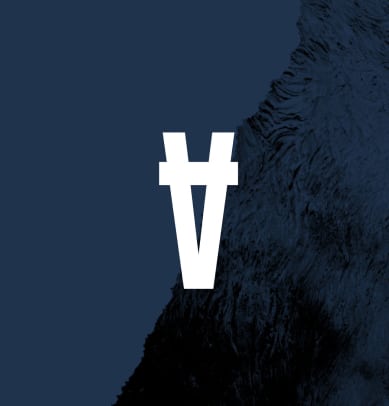
Start your ethical fashion journey. Explore the latest Sans Beast Collection and enjoy 10% off your first purchase over $100.
